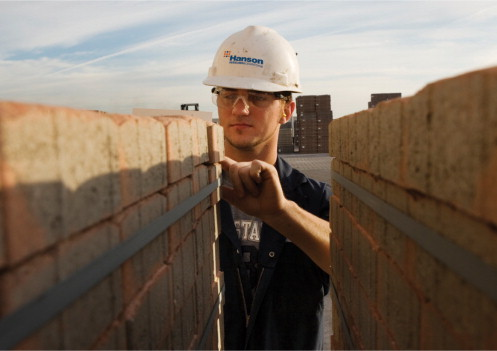
Brick manufacturing with its huge kilns is naturally an energy intensive process. However, one such manufacturer, Hanson Brick Products, has managed to reduce its energy consumption by 56%. Hanson achieved this by adopting variable speed drive technology from Schneider Electric in conjunction with its system integrator partner PPT Drives Systems. Moreover, the entire installation of some 14 drives, plus two spares, was amortised within just eight months.
Energy audit
Hanson Brick's energy efficiency initiative at its Tamworth plant started with an energy audit conducted by PPT Drive Systems, to investigate the usage of the many fans in operation within the kiln processing. The company has a very active sustainability agenda and this permeates the entire business, hence energy usage in its manufacturing facilities is of paramount importance.
PPT's findings revealed substantial energy consumption through a number of powerful fans used in the brick firing process. In total 14 fans were identified as potentially benefiting from the control offered by variable speed drives. Schneider Electric turned to PPT Drives Systems as its partner for the project because the company has a strong track record in translating effective energy audits into practical, applied technological solutions.
The fans in question all ran consistently which equates to 8,760 hours each every year. Ratings included five motors at 11 kW, four on the preheat oven and one on the main kiln contravent, and another at 4 kW on the contravent. The two main kiln burner fans were rated at 30 kW, while the main kiln rapid cooling and control cooling fans were both 22 kW. A 30 kW main kiln recoup fan; two 7.5 kW fans cooling under the cars; and a main kiln final cooling fan of 22 kW completed the installation.
Reducing energy usage of fans
PPT's engineers estimated that all but one of these fans could be reduced in speed from between 10% and 20%, with the remaining single fan reduced by 5%. Previously, eight of the fans had damper controls fitted and the remainder had no controls at all. Although dampers are often used to regulate the output of fans, reducing the speed of the fan is a much more energy efficient way of achieving the same effect.
With damper control, the input power reduces as the flow rate decreases. However, under VSD control, the variable torque characteristic of the fan means that the relationship between flow and the speed of the fan is such that the input power reduces in a cube law relationship with the speed reduction. The energy expended using a VSD is significantly less than that of damper-controlled motors.
Inserting variable speed drives
The decision was taken to install Altivar drives from Telemecanique, a brand of Schneider Electric in IP20 ratings since they were ultimately to be housed in IP66 rated enclosures from Sarel, a company of Schneider Electric. The housings also featured Telemecanique door interlocked switch disconnects suitable for use in dusty environments. Because of the harsh environment of a brickworks, the VSD's keypads/graphical display units were housed behind an IP65 rated opening window.
The VSDs were located near to existing starters within a suitable unistrut framework. The mains feed to the existing star-delta starter contactor arrangement was disconnected and new cabling was connected to the VSDs' main inputs. Main cabling from the star-delta starter was replaced with new cabling from the VSDs to the existing motor terminals. Existing motor cabling was permanently arranged in three parallel pairs with the motor windings in permanent delta connected configuration. The VSD ‘Run' signal was connected across one pole of the existing star-delta starter contactor ensuring that an existing PLC control was unaffected. The VSD speed references are selected manually via the drives' keypads.
While the original calculations for energy savings predicted a pay back within 12 months, these estimated figures relied on making assumptions about consumption, electricity units costs and so forth. In practice, once the new motor controls were in place, the savings were significantly higher than predicted.
Energy savings
Without the VSD controls, the total absorbed power was 204 kW with a total annual consumption of 1,787,176 kWh and an energy cost of £107,231. This equates to 768 tonnes of carbon emission per annum. Under VSD control, the same kiln system absorbs just 90.5 kW with an annual consumption of 792,780 kW and an energy bill of £47,567 per year.
In summary, the savings are 113.5 kW in total absorbed power; 994,396 kWh in consumption; 428 tonnes of carbon; and a saving of £59,664 in the energy bill. The total energy cost savings are 55.6% and the amortisation of the capital investment is a mere eight months.
Richard Horsman, business development manager at PPT Drives commented: “We have worked collaboratively for many years with Schneider Electric and the products and solutions are ideal for energy saving applications.” He added, “Because we share an open reference to technical data and support each other, it provides customers with a formidable team.”
The installation at Hanson Brick Products has enabled the company to not only make substantial savings within its manufacturing process, but has also allowed the company to conscientiously uphold its environmental ethos. It also demonstrates the strength of a true alliance between a system integrator and a global manufacturer in that PPT's specific expertise could be brought to bear on the task, while being backed by state of the art and best in class products.






